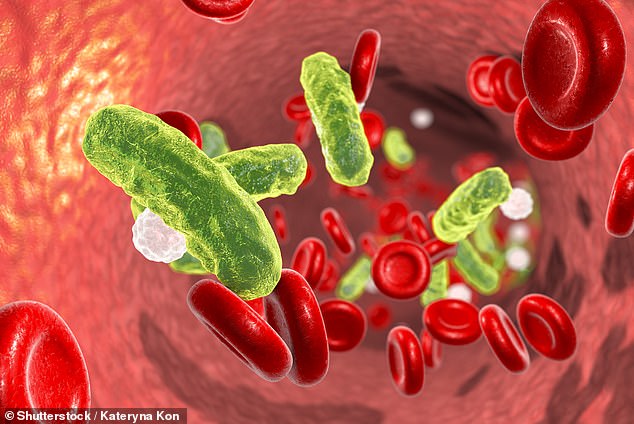A seven-year-old girl from Arizona is fighting for her life and is now on a ventilator after having to have three of her limbs amputated to save her life.
Victoria Pasten-Morales suddenly became ill with symptoms of fever and pain followed by vomiting. But his condition became serious and worsened within hours.
The second grader was admitted to Phoenix Children’s Hospital where she has been in intensive care for two weeks.
During that time, she underwent eight surgeries and now has a long road to recovery with the support of her parents and three siblings.
Doctors say Victoria contracted a bacterial infection, group A streptococcus, which causes sepsis, often called blood poisoning.

The girl was admitted to Phoenix Children’s Hospital where she underwent eight surgeries, battling Group A Strep, losing three limbs in the process.


Victoria is supported by her loving family which includes three siblings and her parents.
As well as the devastating loss of her limbs, the bacteria has now affected her kidneys and lungs, meaning she now requires a respirator to breathe.
The little girl is still in intensive care but is awake and able to communicate with doctors and her family. It is unclear how the youngster contracted the infection.
” Everything happened so fast. It happened very quickly. We don’t know where it came from, but it all happened in less than 12 hours,” his mother, Obdulia Morales, told Fox 10.
“Her lips and hands started turning blue,” Obdulia said. “Even doctors can’t tell us how she contracted this bacteria.”
“Unfortunately, they had to amputate both of his feet and his right hand. His left hand is still recovering,” added his father, Victor Pasten. “Illnesses come unexpectedly. From morning to evening, everything can change in just a second.
The family says their life has changed forever and has set up a GoFundMe to help cover medical costs.


Victoria Pasten-Morales, 7, is fighting for her life and on a ventilator after three limb amputations following a sudden bacterial infection


Victoria’s parents say their lives have been changed forever and have created a GoFundMe to help them with medical costs.


Despite everything she’s been through, the third-grader still offers kisses to her family from her hospital bed in intensive care — a testament to her unwavering strength.


The second grader is seen having a snack at her school, dressed as Minnie Mouse.


Despite the trauma, Victoria’s eyes still light up when her family enters her hospital room
“It’s not going to be easy for her. It’s going to be hard but she’s strong. She’s a warrior,” said mom, Obdulia.
The family says that despite the trauma of the past two weeks, Victoria’s eyes still light up when her family enters the room and she is still able to blow kisses.
Sepsis is a medical emergency that experts call a “silent killer.” It is caused by the body’s extreme reaction to an infection.
Sepsis occurs when chemicals released into the bloodstream cause the immune system to malfunction.
Instead of sending infection-fighting white blood cells to attack a foreign invader, it targets healthy tissues and organs.
Infections that lead to sepsis most often start in the lungs, urinary tract, skin, or gastrointestinal tract, but almost any infection can lead to sepsis, even things as harmless as paper cuts.


Bacterial infections are one of the most common causes of sepsis. Blood tests may look for an increase in the number of white blood cells, which indicates the presence of an infection.
Also known as flesh-eating disease, necrotizing fasciitis is a serious, rapidly spreading infection that kills one in five people, according to the CDC. It is most often caused by group A streptococcus.
Symptoms include a red or warm area of the skin that spreads quickly, severe pain, and fever. As necrotizing fasciitis spreads, it can cause ulcers or blisters on the skin, changes in skin color, pus or oozing, dizziness, fatigue, diarrhea, and nausea.
The CDC estimates that 700 to 1,150 cases occur each year in the United States.
Sepsis can look a lot like the flu, making it extremely difficult to detect early.
There is no single test to detect sepsis, but doctors look for signs of infection using measures such as blood tests.
Sepsis can progress to septic shock, characterized by a significant drop in blood pressure.
According to the Mayo Clinic, signs of septic shock include inability to get up, extreme fatigue or inability to stay awake, and a major change in mental status.
The CDC recommends seeking help immediately if you have signs of sepsis. If left untreated, sepsis and septic shock are fatal.

